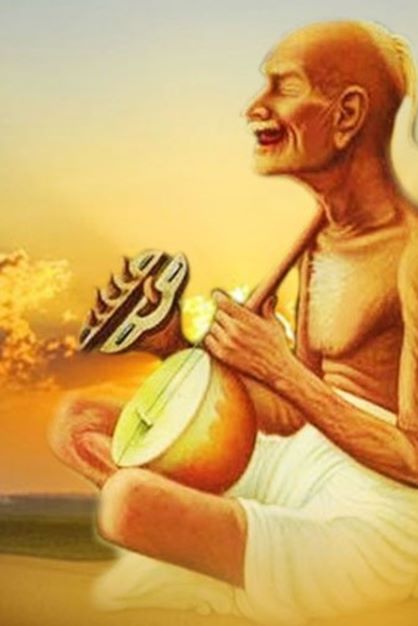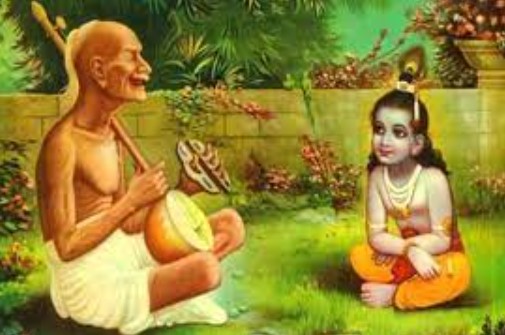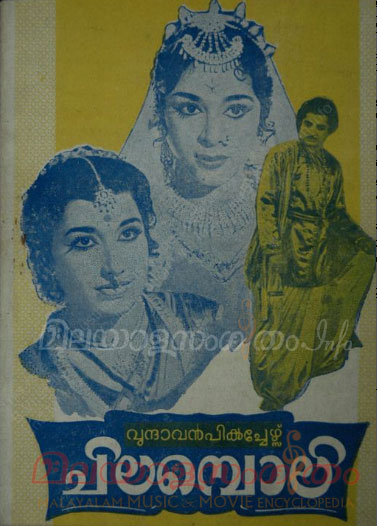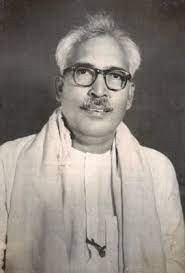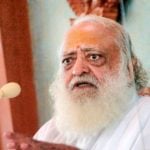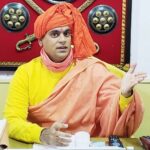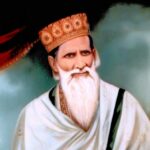Surdas Age, Death, Wife, Children, Family, Biography & More
| Bio/Wiki | |
|---|---|
| Profession | Poet and Singer |
| Famous for | Influencing the Bhakti movement, Sant Mat, and Hymns in the Guru Granth Sahib |
| Career | |
| Philosophy | Bhakti |
| Personal Life | |
| Date of Birth | Somewhere between 1478 and 1483 [1]Rgyan |
| Birthplace | Gram Sihi, Faridabad, Haryana |
| Date of Death | Somewhere between 1579 and 1584 [2]India The Destiny |
| Place of Death | Braj, Uttar Pradesh |
| Age (at the time of death) | 101 Years |
| Death Cause | He died a natural death [3]Janshakti |
| Nationality | Indian |
| Hometown | Gram Sihi, Faridabad, Haryana |
| Relationships & More | |
| Marital Status (at the time of death) | Unmarried |
| Family | |
| Wife/Spouse | N/A |
| Parents [4]Knowledge Ocean | Father- Ramdas Sarswat Mother- Jamunadas |
Some Lesser Known Facts About Surdas
- Surdas was an Indian 16th-century poet and singer who was blind and known for his poetic compositions in the praise of Lord Krishna. He was a hard-core disciple of Lord Krishna and used to write and sing poems in the love of his master.
- Surdas used to compose poems in the Braj, medieval Hindi or Awadhi languages. According to the stories about Surdas, he was blind from birth. The renowned saint Vallabhacharya was his music master, who was the founder of the Pushti Marg Sampraday. Vithalnath, the successor of Vallabhacharya, selected eight poets who would help him in composing the songs and poems to spread the laurels of Lord Krishna. Surdas was one of these eight poets who were popularly known as “Astachap.” Surdas was well known for his outstanding poetic skills and devotion to Lord Krishna. The meaning of Astachap,
Eight disciples of Vallabha Acharya are called the Aṣṭachāp, (Eight seals in Hindi), named after the oral signature chap written at the conclusion of literary works.”
- Surdas composed the book titled Sur Sagar (Sur’s Ocean). Later, several books were released as revised editions of this book by some Indian poets in Sur’s name. In the book Sur Sagar, Surdas narrated and describes the portrayals of Lord Krishna as:
the lovely child of Gokul and Vraj, written from the gopis’ perspective.”
- According to some historians and scholars, the exact birthdate of Surdas is disputable. Some believed that he was born in the year 1478. In the Vaishnav calendar, the birthday of Surdas is celebrated on the 5th day of the Hindu month of Vaishakh and is popularly known as Surdas Jayanti. However, the other scholars believed that his birth date was somewhere between 1561 and 1584. These historians and scholars also disagree on the birthplace of Surdas. Some of these historians believed that Surdas was born in the village Ranukta or Renuka, which is situated on the main road passing through Agra to Mathura, while other scholars have the perspective that Surdas was born in a village called Sihi, which is situated near Delhi.
- A theory about Surdas mentioned that he was born in a very poor family and was blind from birth. His family members started neglecting him and forcefully get him out of the house at the age of six. Later, after leaving the house, he met the saint Vallabhacharya and became his follower. Soon after becoming Vallabhacharya’s devotee, Surdas started memorizing the Shrimad Bhagavad Gita under the guidance and training of his master. Surdas also began reciting Hindu scriptures and started giving religious and philosophical discourses. Throughout his life, Surdas did not get married. [5]Chandrakantha
- In his poetic composition Sur Sagar, he described the visuals and descriptions of Lord Krishna and Radha, who loved each other. The poems he composed narrated the longing of Radha and Gopis when Krishna was not around them. Additionally, the poems in Sur Sagar focus on the Bhakti and some glimpses of Ramayana and Mahabharata. This book describes Lord Krishna as a naughty and loveable child of Braj from the perspective of Gopis. Later, Surdas composed two books titled Sur Saravali and Sahitya Lahari. Reportedly, Sur Saravali contained one lakh verses, but with the passage of time, some of the verses were lost due to obscurity. In his books, he mainly focused on the creations of Lord Krishna, and according to him,
The Lord is the Great Player, who, in his playful mood, creates the universe and the Primerial man out of himself, who has the three gunas, namely Sattva, Rajas and Tamas.”
- In the 24 images of Lord Krishna, Surdas tried to explain that the Indian historical legends Dhruva and Prahlada were also connected with Lord Krishna as Krishna’s disciples. The incarnations of Krishna described him as the enthusiast of Vasant (Spring) and Holi festivals. Another book Sahitya Lahari consisted of 118 verses that primarily focused on Bhakti (devotion) toward Lord Krishna. The holy book of Sikhs ‘Guru Granth Sahib’ also contains some compositions of Sur.
- During the spread of the Bhakti movement across the Indian subcontinent, Surdas actively participated in the movement. Several saints together joined this movement to represent spiritual empowerment among the masses. In the seventeenth century, initially, this movement began in South India and gradually started spreading to the states of Nothern India.
- Surdas used to compose his poems in Braj Bhasha, a dialect of Hindi. This language was also common among the locals, while either Persian or Sanskrit were the prevalent literary languages. Soon after his poems started getting recognition, the status of Braj Bhasha also elevated from a common language to a literary one.
- In modern India, several films were picturised the life of Surdas. In 1939, the film Surdas was released by Krishna Dev Mehra. In 1942, Bhakta Surdas was released by Chaturbhuj Doshi. In 1988, Chintamani Surdas was picturised by Ram Pahwa. Several other pictures on his life include Bilwamangal or Bhagat Soordas (1919) by Rustomji Dhotiwala, Bilwamangal (1932), Chintamani (1956) by P. S. Ramakrishna Rao, Chilamboli (1963) by G. K. Ramu, Bilwamangal (1976) by Gobinda Roy, and Vilvamangal Ki Pratigya (1996) by Sanjay Virmani.
- The book Shri Krishna Gitavali, which was written by Indian poet Tulsidas, was inspired by the writings and compositions of saint Surdas. Reportedly, Tulsidas and Surdas were good friends.
- Soon after Surdas’s poems started receiving popularity, his devotional songs also fascinated the great Indian ruler Akbar.
- The modern Indian poet Dr Hazari Prasad Dwivedi has praised the poem compositions of Surdas in his Hindi poetry and books. In one of his writings, Hazari Prasad Dwivedi described a verse about Surdas. He wrote,
When Surdas starts describing his favorite subject, it is as if the Alankar Shastra follows him with folded hands. And there is a flood of similes and a rain of metaphors. At the same time , Surdas has depicted the childhood form of Lord Krishna very succinctly and vividly. Surdas ji had turned poetry in a wonderful direction by connecting Bhakti with Sringar Rasa.”
- At the library of Kashi Nagari Pracharini Sabha, the 25 texts composed by Surdas are kept for the readers.
- According to the poetry of Surdas, both Bhavapad and Kalapaksha meet in the same state.
- A story about Surdas narrates that the saint Vallabhacharya found a blind man crying on the banks of the Mathura river when he (Vallabhacharya) was coming toward Vrindavan and asked Surdas that why he was crying. Surdas then replied that he was blind and did not know what to do. Then Vallabhacharya placed his hands on Surdas’s head, and at that moment Surdas had a glance at Lord Krishna with his closed eyes. He saw a flashback of Krishna’s life journey when he lived in Braj about five thousand years ago. Soon after the incident, Vallabhacharya took Surdas to Vrindavan and taught him how to sing aarti, which used to held daily at Shrinath temple.
- Surdas was associated with the Vallabh sect. According to this sect, Surdas was younger than his guru Sri Vallabhacharya. Soon after receiving initiation from his master, Surdas began singing the poetry of Lord Krishna from the Indian epic book the Shrimad Bhagavad Gita. According to some historians, the compositions of Surdas were highest among the other Indian poets and singers including Narsi, Meeran, and Vidyapati.
- The compositions of Surdas included Sur-Saravali, which was based on the Indian festival Holi. In Sur-Saravali, there are a hundred verses in which Surdas elaborated on the origination of this world by Lord Krishna as the Creator. His second most popular composition includes Sahitya-Lahiri in which Surdas tried to associate his Bhakti (devotion) with the Supreme Lord. The third composition of Surdas is Sur-Sagar in which he wrote 100,000 poems or songs on Lord Krishna.
- The philosophy of Surdas revolved around the Bhakti Movement. The Shuddhadvaita school of Vaishnavism was propagated by Surdas. He focussed on the spiritual analogy of the Radha-Krishna Lila, which he acquired by listening to the saints of his time.
References/Sources:

